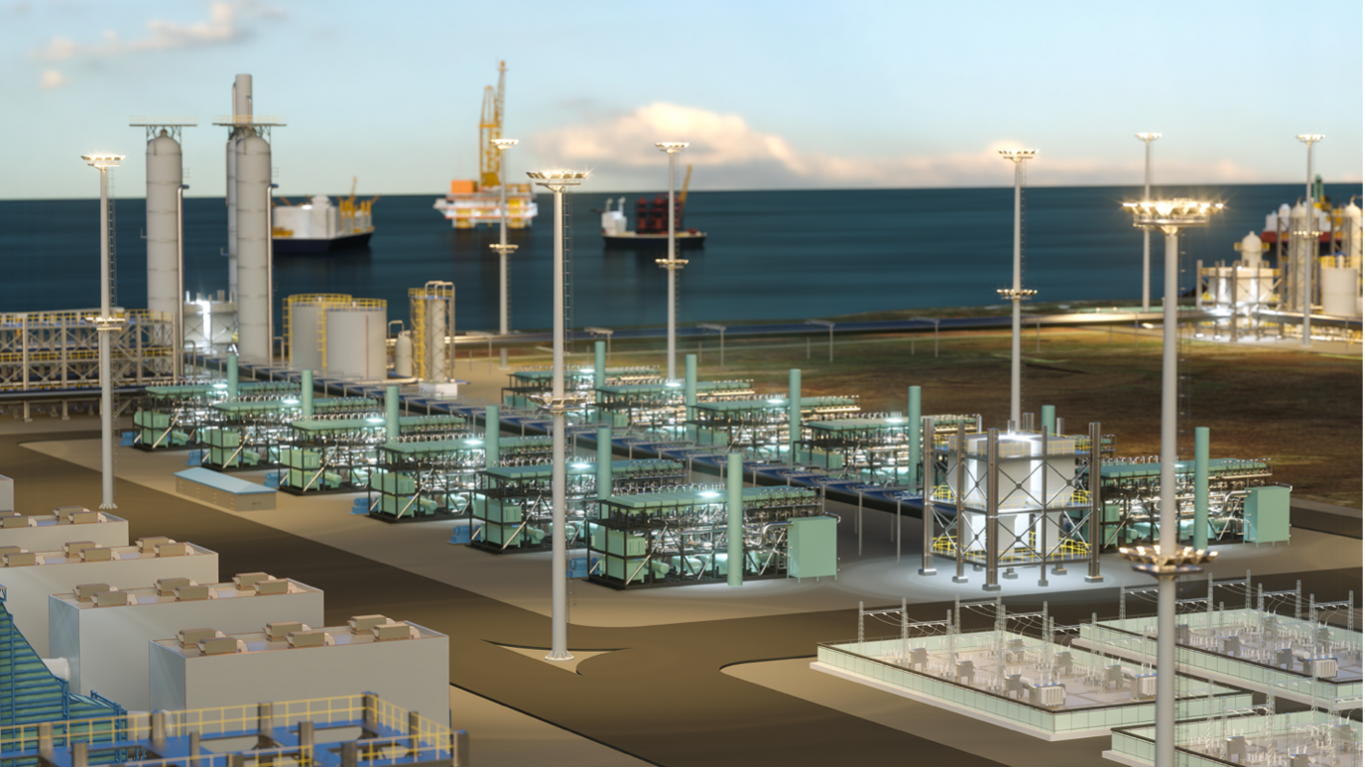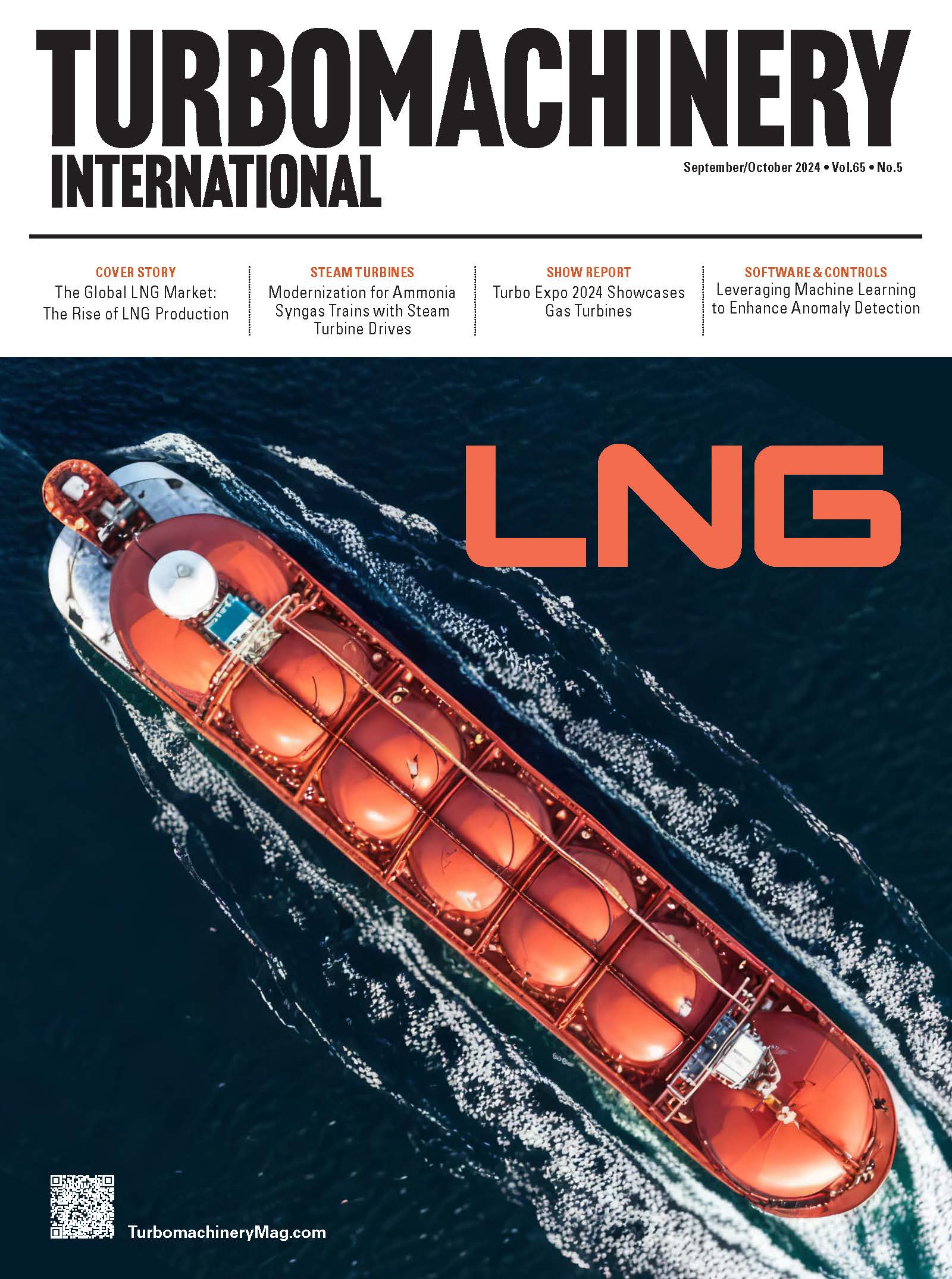Product Spotlight: Baker Hughes' NMBL LNG
Baker Hughes’ NMBL LNG delivers flexibility in an increasingly dynamic LNG market.
LNG plays a long-term role in the energy transition. Recent data from Wood Mackenzie’s 2024 Global Gas in the 2050 Net Zero World report shows that gas demand will be resilient for the next 20 years while LNG demand will grow until near 2050. According to Baker Hughes’ first quarter 2024 results, global gas and LNG demand growth will see a compound annual growth rate through 2040 of around 1% for gas and 3.5% for LNG.
Even considering Wood Mackenzie’s report, a case less favorable to fossil fuels, gas is expected to decline far less than oil and coal. In the long run, global LNG demand is expected to be driven by emerging Asian economies, coupled with a limited domestic gas supply which will call for increased LNG imports. In short, LNG is both a transition and a destination fuel.
A GROWING LNG MARKET
While in emerging Asian countries gas demand will be propelled by the transition from coal to gas and challenges with scaling up renewables, in developed economies the increasing speed of electrification and the roll-out of intermittent renewable energy sources will require more low-carbon and dispatchable power generation sources, supporting grid stability and flexibility.
The global LNG market is responding with an unprecedented surge of additional export capacity. According to Baker Hughes, over the next three-year period (2024 - 2026) approximately 100 million metric tons per year (MTPA) of liquefaction capacity is expected to reach a final investment decision.
The Institute for Energy Economics and Financial Analysis forecasted in its Global LNG Outlook 2024 – 2028 report that nameplate LNG liquefaction capacity from projects under construction or approved by financially capable backers could add an estimated 193 MTPA of new supply capacity from 2024 to 2028, taking the total capacity to more than 650 MTPA—a 40% increase in five years.
This robust supply growth will facilitate lower prices, increasing competition between export terminals. The most competitive projects will be those able to deliver the most cost-effective LNG while offering flexibility and a lower carbon footprint, which explains the continuous innovation and investment from the LNG supply chain to respond to and overcome these challenges.
INNOVATING LNG
Traditionally, the LNG industry has been a capital-intensive market. With significant upfront investments needed and long design-to-construction schedules, building an LNG export terminal has always been a careful and risky venture. In contrast to traditional large-scale liquefaction plants, mid-scale solutions based on multiple smaller modular trains represent an important innovation for the industry.
Modules are plug-and-play assemblies capable of increasing speed to market—the time needed to achieve the first drop of LNG. As such, projects can be developed in phases and gradually add new liquefaction capacity while managing financial exposure from previous phases.
At the same time, more flexibility versus traditional stick-built projects can be obtained by splitting the required total LNG production capacity across multiple independent modules, which optimizes production and minimizes maintenance costs. Plus, pre-constructed turnkey modules help minimize project risk, enhance the level of control over module fabrication, and reduce construction site costs and potential schedule delays.
Significantly fewer construction personnel and less site time enhance overall project safety—a key aspect of any LNG project. Pre-designed modules lower engineering costs, as project design efforts are dedicated to the elements of the LNG plant, which cannot be standardized upfront.
NMBL LNG (pronounced “nimble”) is Baker Hughes’ modular solution for mid-scale gas liquefaction. It consists of modules with the ability to process from 0.8 up to ~2 MTPA each and is based on the single-mixed refrigerant liquefaction process.
THE NEED FOR FLEXIBILITY AND SCALABILITY
Many LNG reserves around the world, both accessible and remote, are too small to be economically viable with the conventional large-scale, stick-built approach—from engineering to construction and start-up. This is especially true in the current market context where LNG supply and demand is growing rapidly and the ability to exploit stranded gas reserves can be a differentiator for monetization.
To seize the opportunity, energy companies need an even greater level of agility and the flexibility to consider onshore and offshore LNG options. Traditional LNG projects often falter providing this flexibility due to long lead times, significant upfront investments, and an inability to right-size production. NMBL is designed for scalability and pre-constructed fit for purpose.
NMBL FEATURES
Each NMBL liquefaction train includes the process module, a turbo or electric motor-compressor for the mixed refrigerant, the surge vessel for refrigeration storage, the cold box of brazed aluminum heat exchanger type, and the e-room. Its mid-sized modular design mitigates the challenges faced with traditional approaches to engineering and construction and can reduce risks and increase control during the execution phase. Upon arrival, final installation is significantly faster and requires fewer on-site personnel depending on the project specifics. These factors, along with simplified interconnections and civil works, can dramatically reduce project costs.
NMBL modules are a “design one, build many” concept. Its design can be easily scaled up to serve the range from 0.8 to ~2 MTPA and has been optimized to reduce weight and footprint. With a production capacity of 1 MTPA range of LNG, each module weighs approximately 3,000 tons and has a total plant footprint of approximately 3,000 square meters.
Rendering of Baker Hughes NMBL LNG modular solution for mid-scale gas liquefaction.

While traditional modular projects have many interfaces among different companies working simultaneously and not always with the same goals, NMBL integrates design, procurement, fabrication, and testing phases to reduce project risk under a single point of responsibility.
Another NMBL feature is the ability to accommodate different mixed refrigerant compressor drivers, either gas turbine or electric motors, without changing module configuration. The liquefaction process produces zero emissions because it is driven by an electric motor compressor.
NMBL also delivers greater project integration with:
- a wide range of compact aeroderivative gas turbines, including the LM2500, LM6000, and LM9000 families
- a set of electric motors from BRUSH Power Generation, part of the MAX synchronous motors product line, capable of serving a 30 - 95 MW range
- mixed-refrigerant centrifugal compressors
With an LM9000 used for the compressor mechanical drive, its high-power engine is coupled with a high level of efficiency (73.5 MW and 44% efficiency, ISO conditions). With the electric motors as prime movers, the eLNG project can instead accommodate a centralized power island working on gas turbines in single- or combined-cycle.
In the latter case, Baker Hughes can supply power blocks with multiple running LM9000s coupled with one SC/type steam turbine. Moving from simple- to combined-cycle alone enables an increase in power generation efficiency by 20% or more, significantly reducing a project’s carbon footprint.
While recommended for both onshore and offshore liquefaction and small- to medium-size operations, NMBL is also suited for remote locations where a reliable power grid may not be available and therefore the power-block concept is a more fitting solution. Because the LM9000 is an aeroderivative gas turbine, its intrinsic ability to accommodate frequent starts and stops is not only compatible with baseload operations but can also compensate for the fluctuations from intermittent sources when the power supply is coming from renewable energy sources.
NMBL modules are also digitally native— that is they can integrate the equipment offering with lifecycle service and software features. The system is fully compatible with commercially available distributed control systems. Modules can be transformed into “smart objects” via the Baker Hughes iCenter digital platform powered by Cordant asset performance management software.
WHAT THE FUTURE HOLDS FOR LNG
The LNG industry is undergoing a significant transformation driven by the need for cleaner, more flexible, cost-effective solutions. Shaping industry standards and collaborating with partners across the value chain will accelerate the adoption of new, innovative solutions that can drive productivity and deliver emissions reductions at scale.
As the world seeks to balance its growing energy needs with the imperative to decarbonize, modular LNG is poised to play an increasingly important role, and Baker Hughes is well-positioned with NMBL.
Andrea Intieri is the LNG Platform Leader of Gas Technology Equipment, Industrial, and Energy Technology at Baker Hughes.
